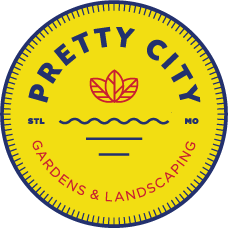Monarch butterfly on Purple Coneflower (Echinacea purpurea)
Eastern Tiger Swallowtail on Purple Coneflower (Echinacea purpurea)
Planting for Pollinators - Native Plants
While we are not purists (we work with plenty of non-native plant species), we feel that native plants make the most sense in a garden. Why, you ask? Because native plants are uniquely better suited than non-natives at one key thing: supporting wildlife. We don’t just mean providing nectar from flowers but also (even more importantly) food in the form of leaves for caterpillars. Our native insects including bees and butterflies have evolved to use native plants as a food source. In the case of many butterfly and moth larva they are simply unable to use non-native vegetation to reproduce. If you would like to learn more: Bringing Nature Home by Doug Tallamy is a wonderful book that discusses the importance of using native plants in home gardens.
So much of what we do as a business including the MSD Project Clear Small Rainscaping Small Grants program (which utilizes native plants), our garden maintenance work with the South Grand CID (again native plants), and our volunteer work in our neighborhood public gardens (once again, natives) involve the use of native plants.
If you enjoy seeing birds, bees, and butterflies in your garden then native plants are for you! If you already have native plants in your garden you might be wondering what new visitors you are attracting to your native plants. iNaturalist is a wonderful free app for your phone which can help identify the visitors to your garden.
Red Admiral butterfly on Purple Milkweed (Asclepias purpurascens)
A Golden Legged Mydas Fly on Hairy Mountain Mint (Pycnanthemum pilosum). This is an uncommonly found fly species that looks more like a wasp. Interesting! Read more about Mydas Flies here.
Painted Lady Butterfly on Purple Coneflower (Echinacea purpurea)
Larva/Caterpillar of Gulf Fritillary butterfly which feeds on our native Purple Passion Flower (Passiflora incarnata)
Monarch Butterfly on Swamp Milkweed (Asclepias incarnata) - Monarchs are an excellent example of a butterfly species that is uniquely suited to reproduce using only plants in the Milkweed family. There are over 12 native species of Milkweed to Missouri.
A Great Golden Digger Wasp on Hairy Mountain Mint (Pycnanthemum pilosum). There are actually an amazing number of wasps that visit flowers as adults!
Dark Flower Scarab on Swamp Milkweed (Asclepias incarnata)
Squash Vine Borer Moth on Common Milkweed (Asclepias syriaca) - this is considered a “pest” species because of the damage they cause to cultivated squash, but it is a native moth species to North America with a quite different look!
Brown Belted Bumblebee on Hairy Mountain Mint (Pycnanthemum pilosum)
Native Carpenter Bees on Swamp Milkweed (Asclepias incarnata) at Hampton Wedge. How many can you count?!
Aside from planting native plant species you can also help support our native bees with ideas such as a native bee hotel. Many of our native bee species are cavity nesting bees that use existing holes to create their nests. Notice how some of the holes have green colored material capping them off. Those cavities already contain bee larvae and are sealed off by the adult bees to allow the eggs to mature.













